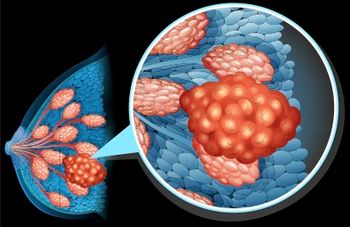
Chemotherapy Showed No Benefit Against Luminal A Breast Tumors
Premenopausal women with luminal A breast tumors received no benefit from treatment with adjuvant chemotherapy.
Premenopausal women with the luminal A breast cancer subtype received no benefit from treatment with adjuvant chemotherapy, according to the results of a prospective-retrospective study (abstract S1-08) presented at the 2015 San Antonio Breast Cancer Symposium (SABCS).
According to data presented by Torsten Nielsen, MD, PhD, professor of pathology at the University of British Columbia in Vancouver, Canada, women with luminal A tumors who received chemotherapy had similar rates of disease-free survival to that of women who did not receive chemotherapy. In contrast, the trial showed that women with non-luminal A subtypes of breast cancer had significant improvements in survival with the use of adjuvant chemotherapy.
“Women with this common luminal A subtype get no benefit from chemotherapy even if node positive even in the absence of hormonal therapy,” Nielsen said during the press conference.
According to Nielsen, intrinsic subtypes of breast cancer have proven to be prognostic in many settings and appear to be promising for the prediction of benefit from chemotherapy. The best way to research this further would be with phase III randomized trials testing chemotherapy compared with no chemotherapy; however, since it was established decades ago that adjuvant chemotherapy provides a benefit to women with breast cancer it would be unethical to carry out studies randomizing women to no chemotherapy.
To conduct this study, Nielsen and colleagues used data from the randomized 77B trial from the Danish Breast Cancer Cooperative Group. The trial, which took place from 1977 to 1983, included 1,146 premenopausal women with lymph node–positive invasive breast cancer who were randomly assigned to two chemotherapy arms (cyclophosphamide alone or cyclophosphamide/methotrexate/fluorouracil) or two no chemotherapy arms. None of the women on the trial received endocrine therapy.
Nielsen and colleagues performed subtype analysis using immunohistochemistry on tissue samples taken from 709 patients on the trial and compared 10-year disease-free survival. They looked for the presence of ER, PR, HER2, and Ki67. Luminal A was classified by ER positivity, HER2 negativity, low proliferation rate as measured by Ki67 index, and high PR expression; 165 patients were classified as luminal A.
Comparing treatment with or without chemotherapy, the researchers found that women with luminal A subtype had no difference in the 10-year disease-free survival rate (hazard ratio [HR], 1.07 [95% confidence interval (CI), 0.53–2.14]; P = .86). Women classified as having non–luminal A subtypes were 50% less likely to have disease recurrence at 10 years (HR, 0.50 [95% CI, 0.38–0.66]; P < .001).
Nielsen did acknowledge several limitations to the study, specifically that the women in this older trial were high-risk patients and were not able to take advantage of many of the newer therapies available today such as endocrine therapy, anti-HER2 therapies, anthracyclines, or taxanes.
When questioned about whether or not women would be open to forgoing treatment, Nielsen responded: “If you have a really molecularly low-risk disease and the actual course of that disease is quite indolent then we can be less aggressive but these are risks, to back off on therapy that we know works.… For this group of women it looks like chemotherapy, at least the chemotherapy given here, provides no benefit and can be avoided.”
Newsletter
Stay up to date on recent advances in the multidisciplinary approach to cancer.


















































































